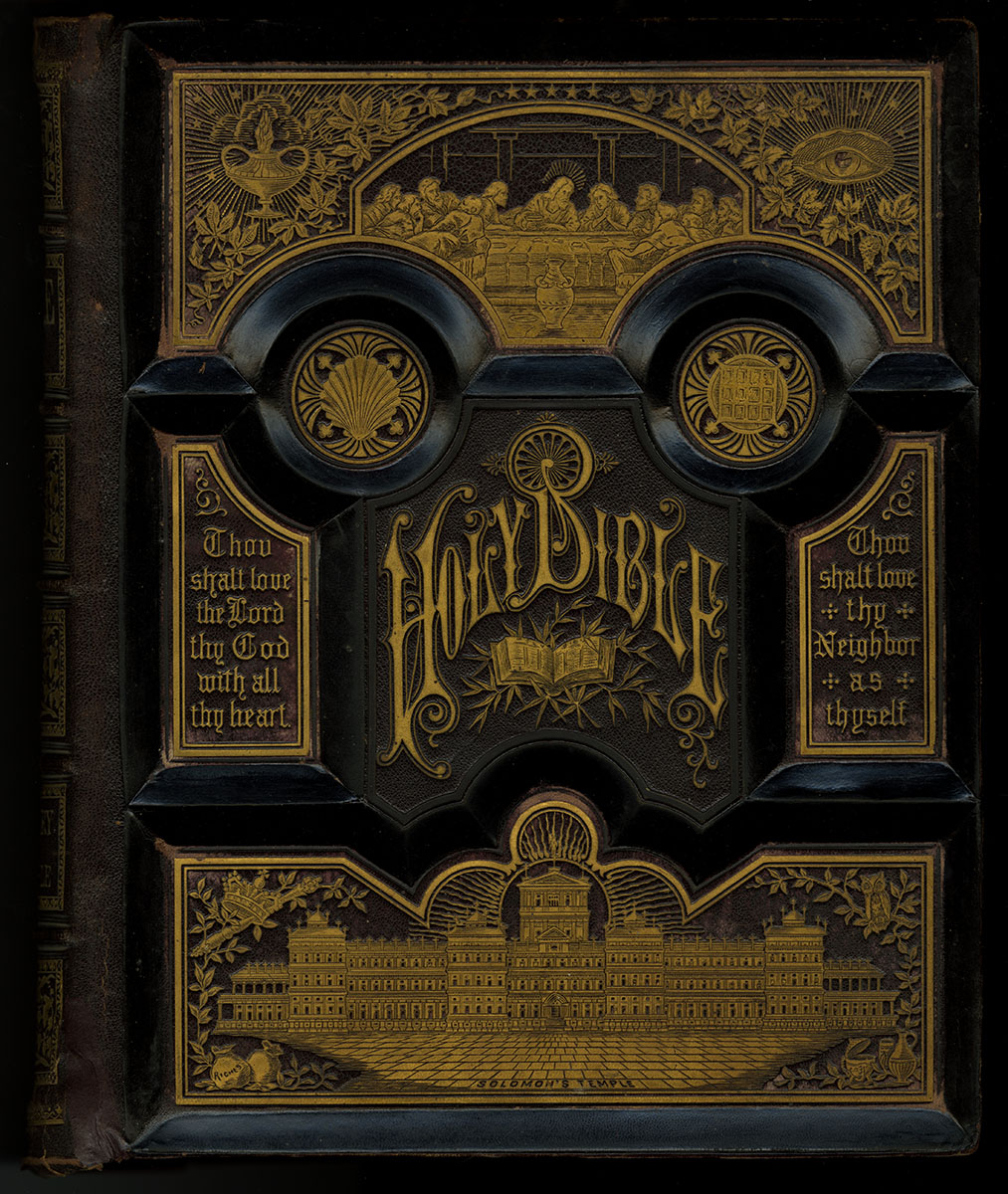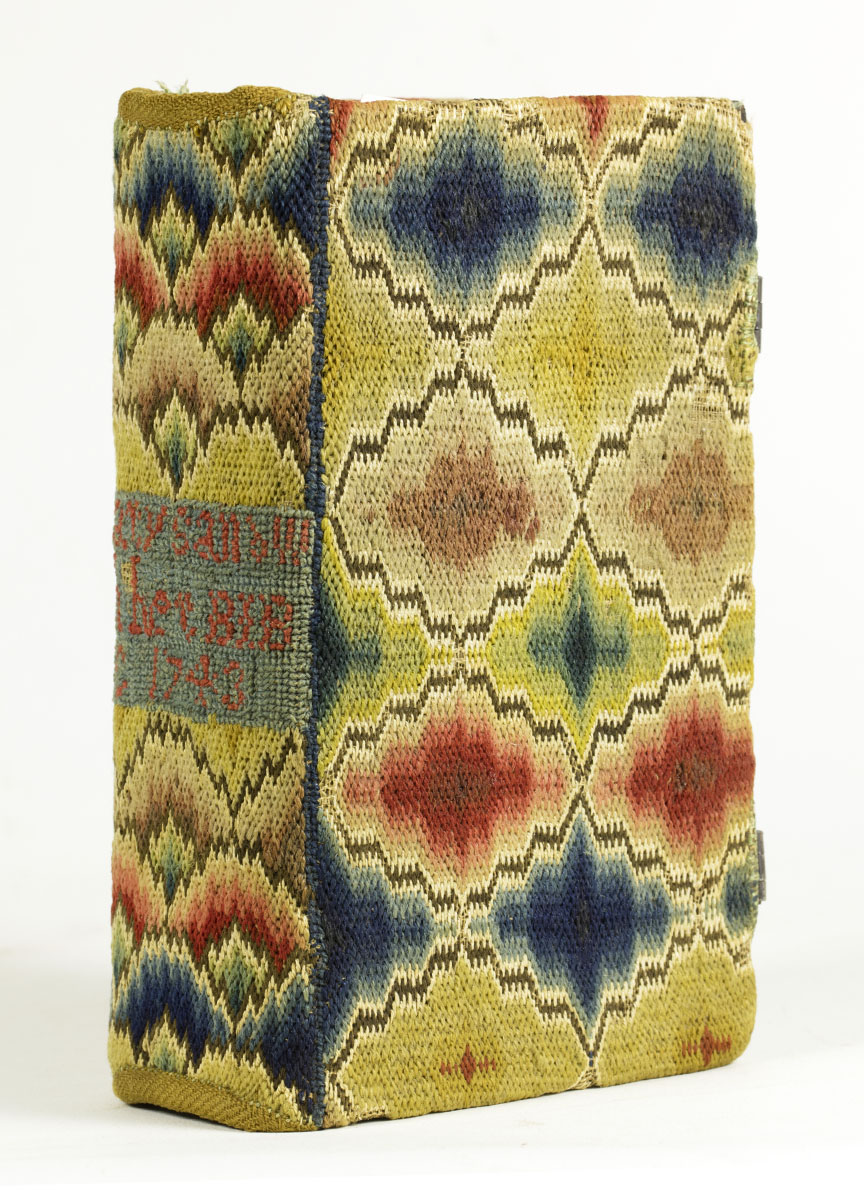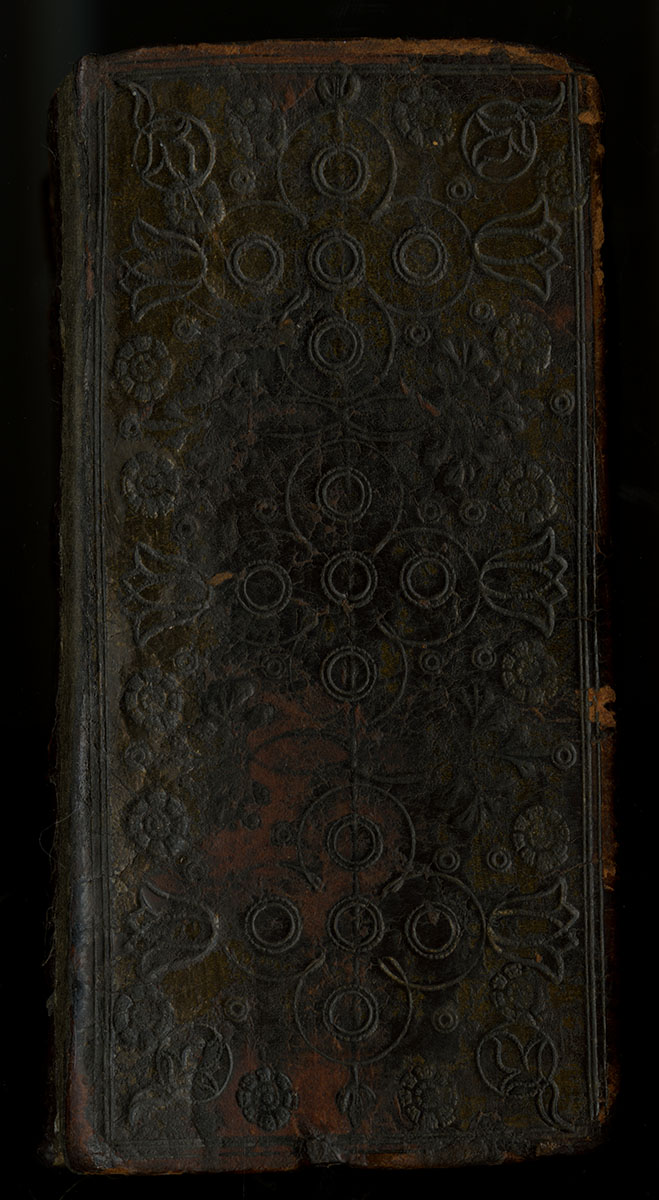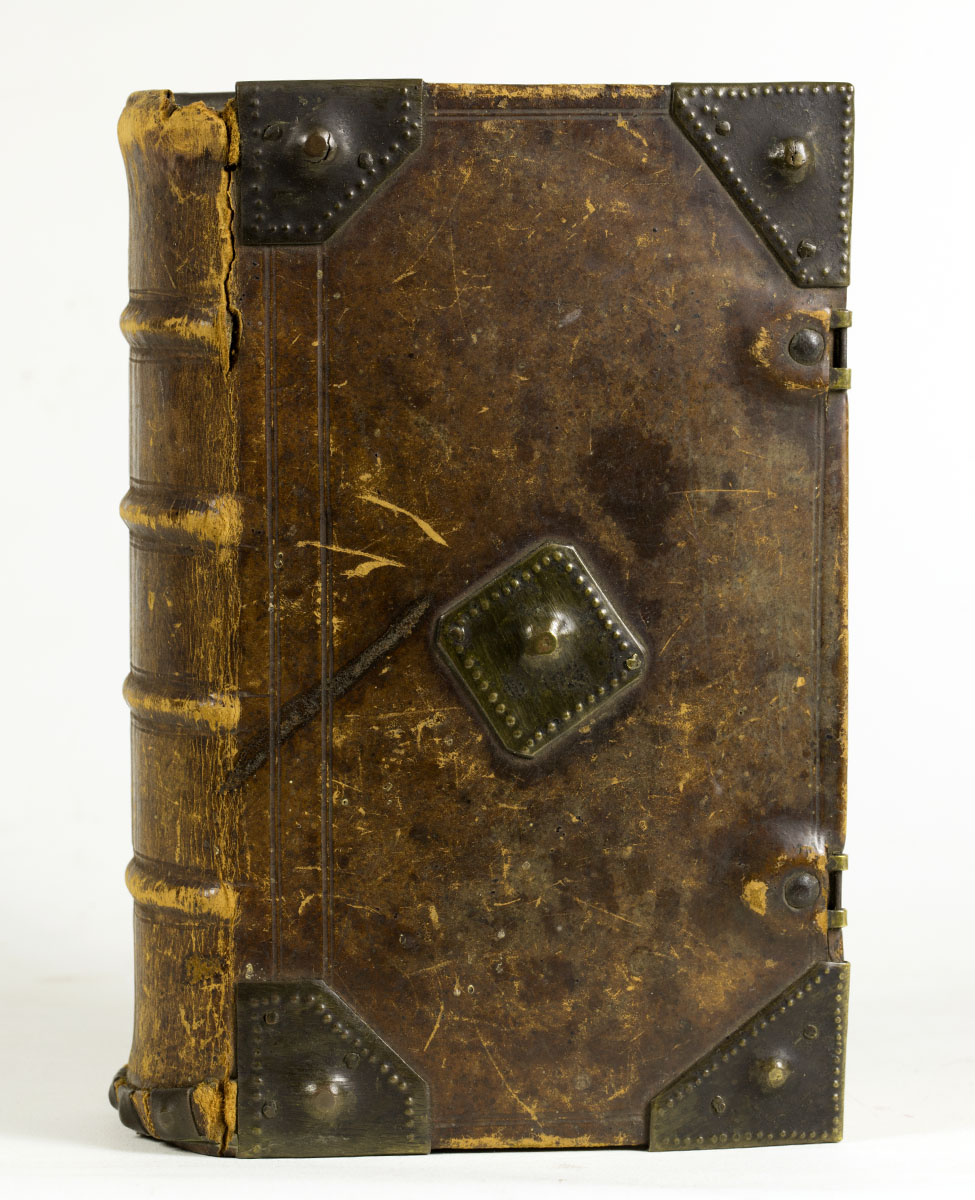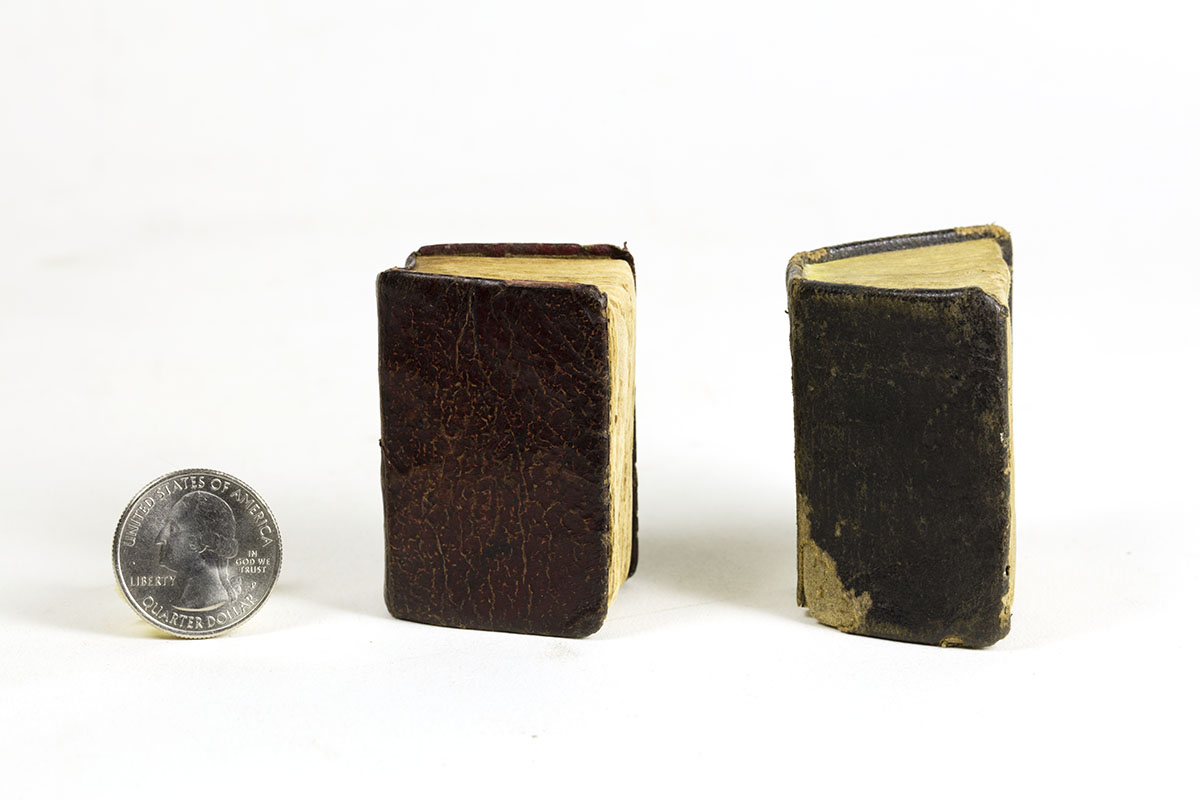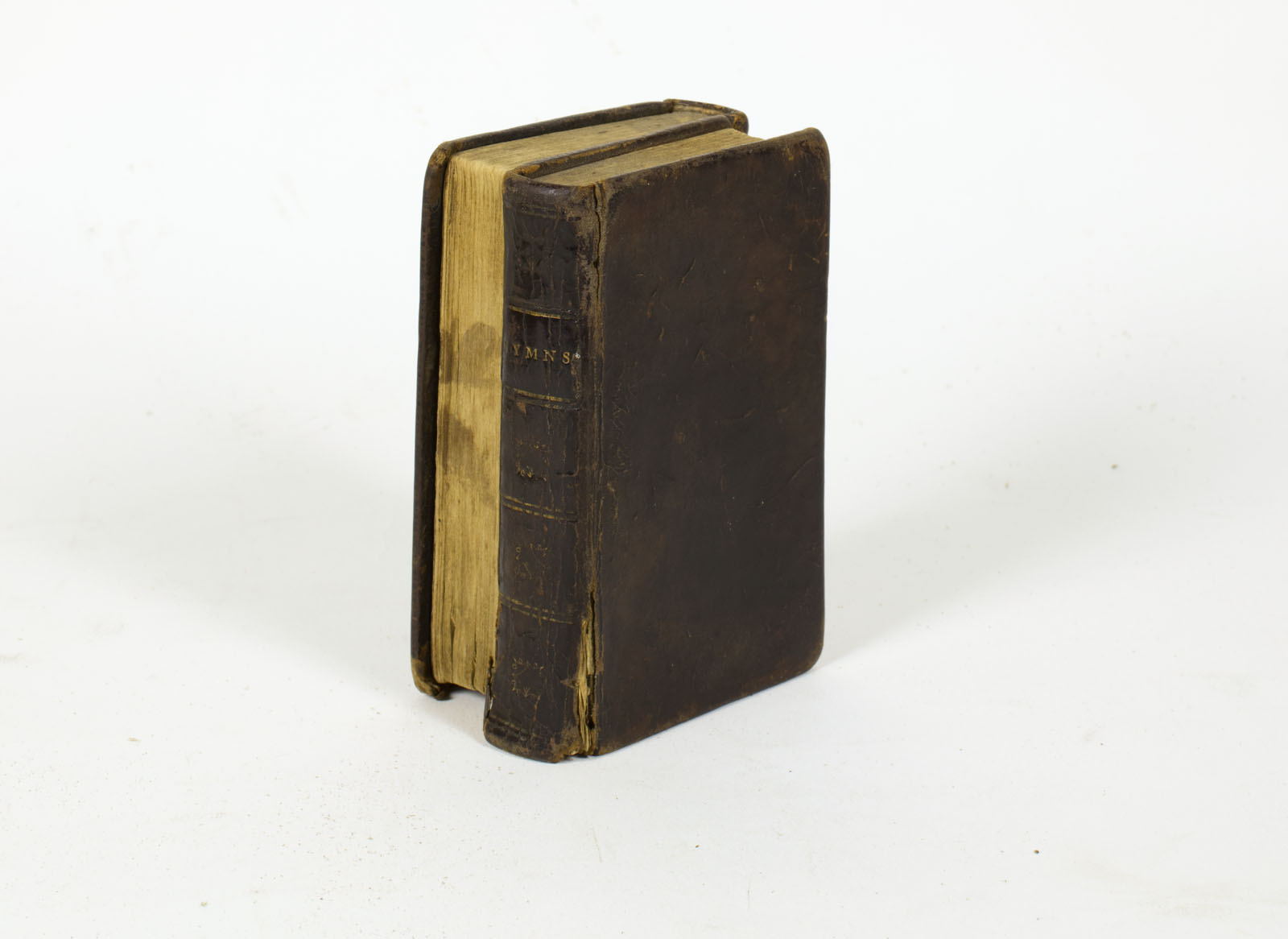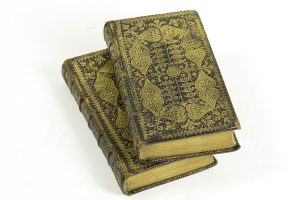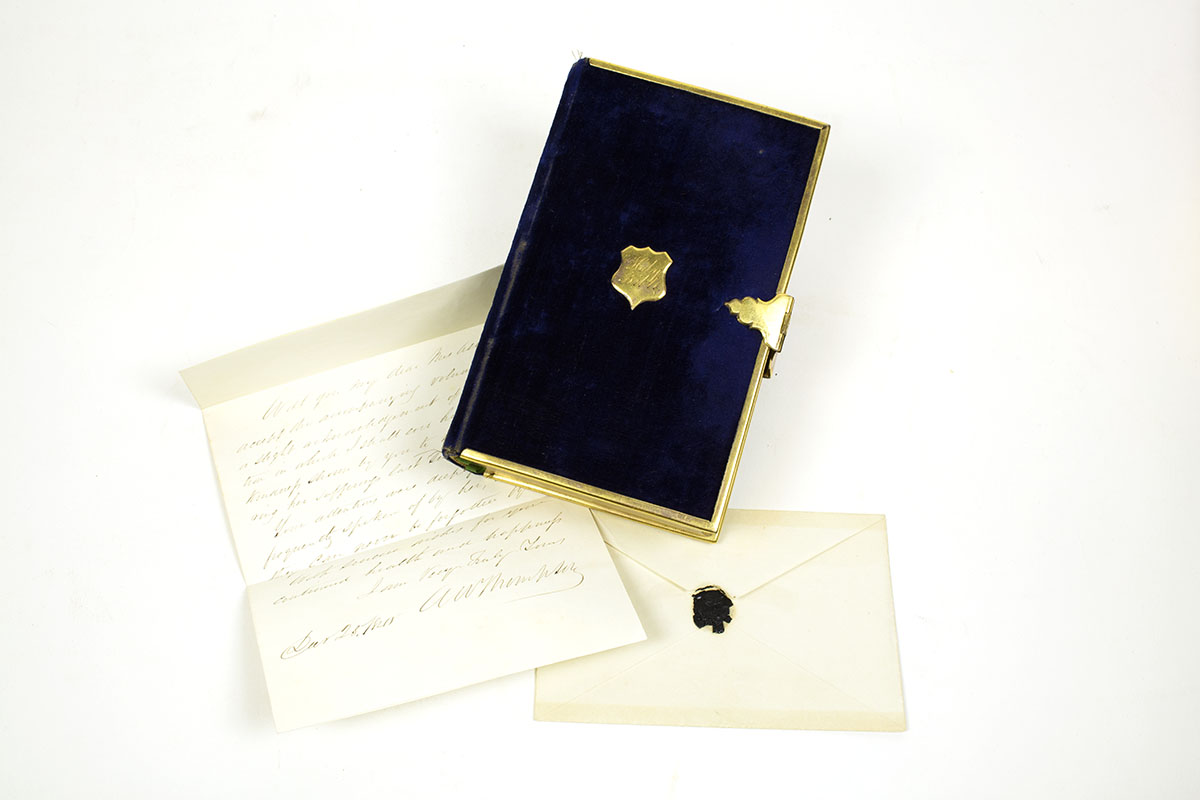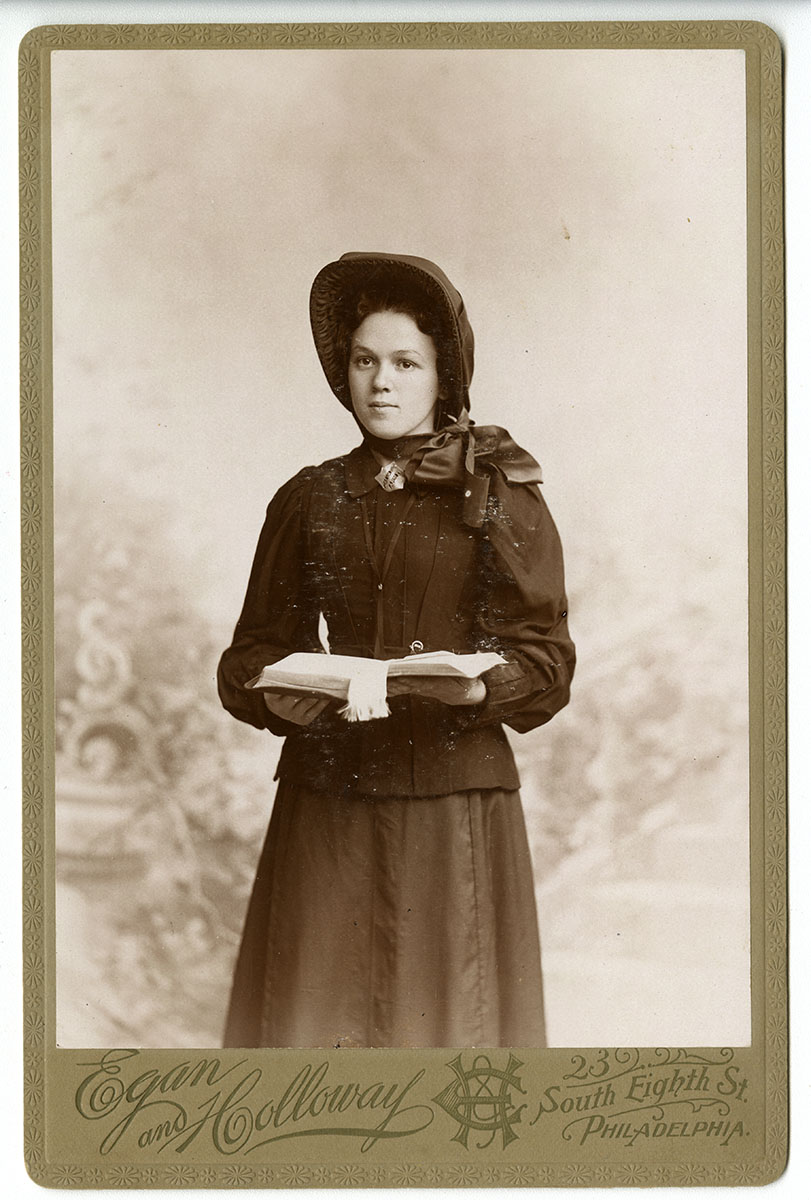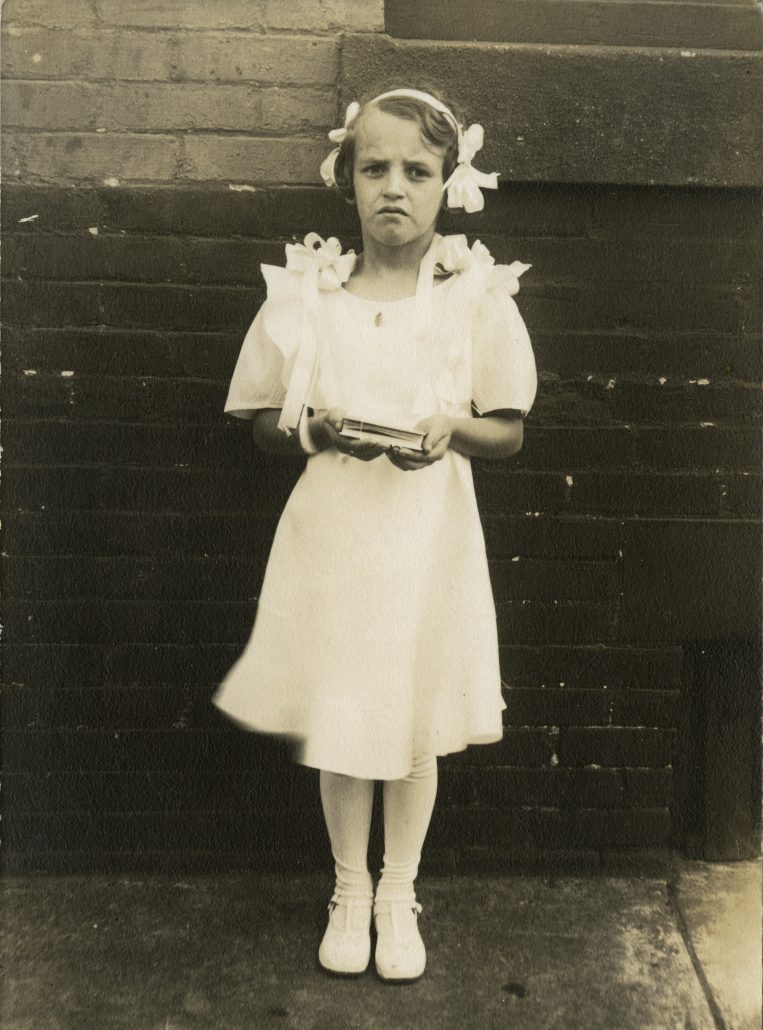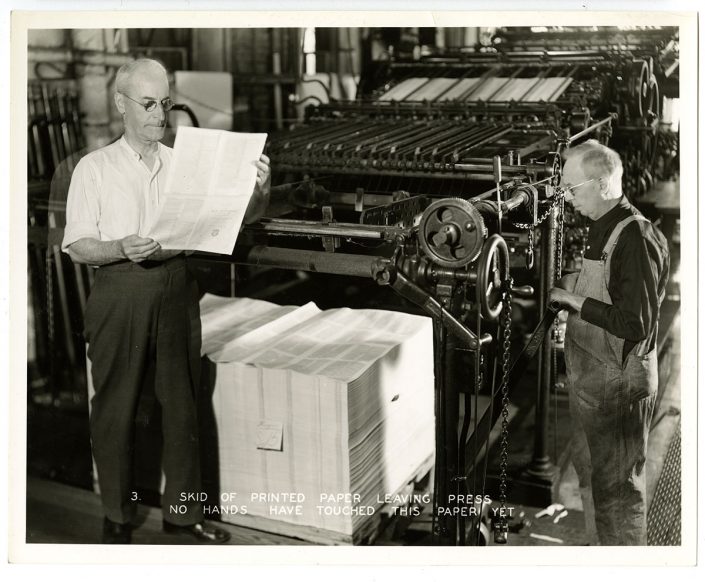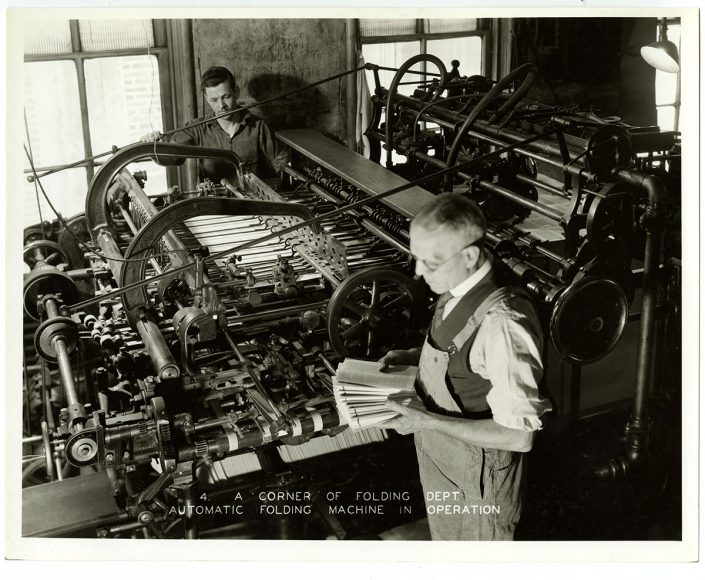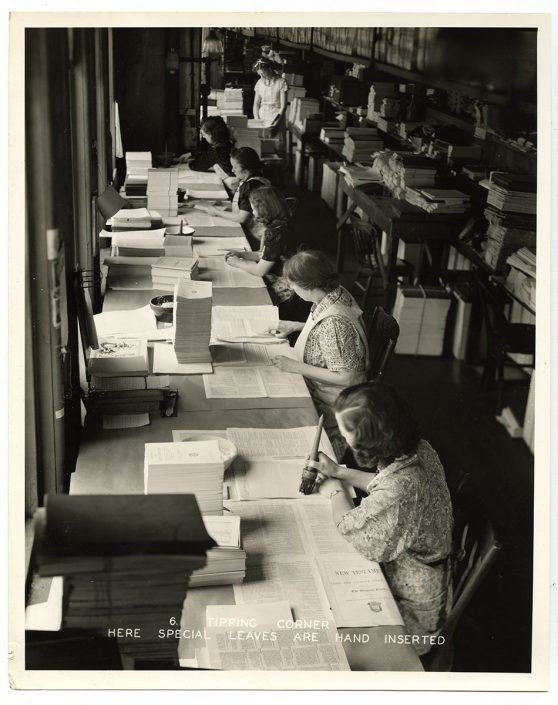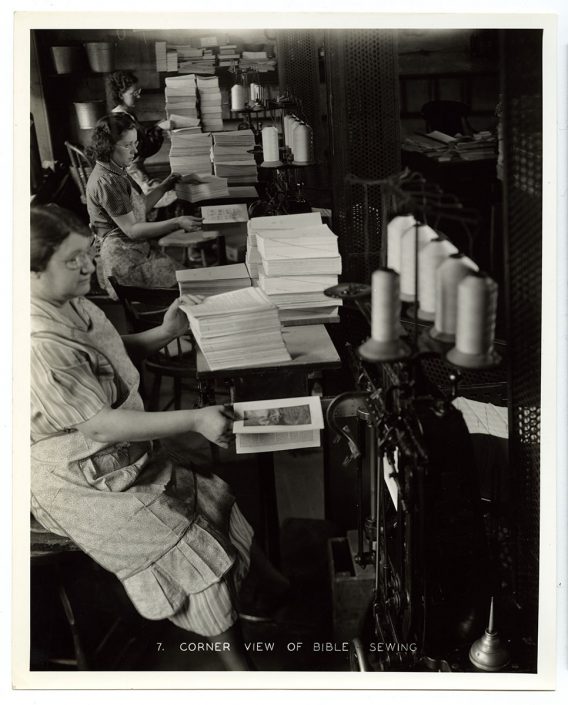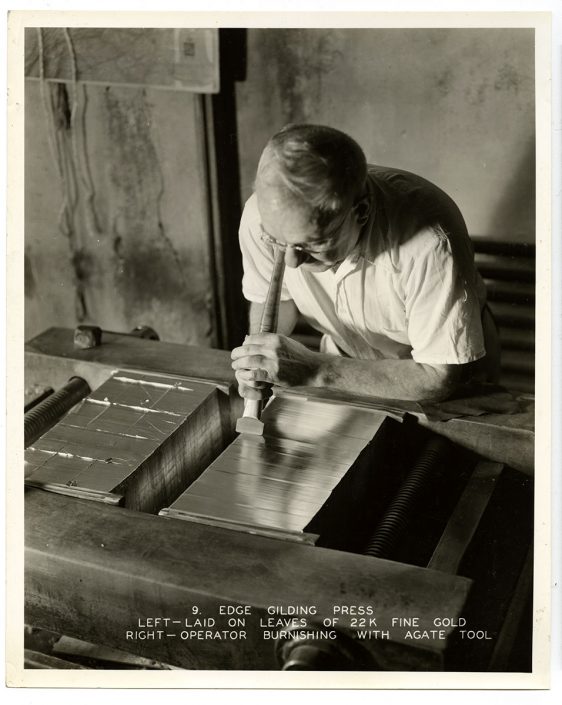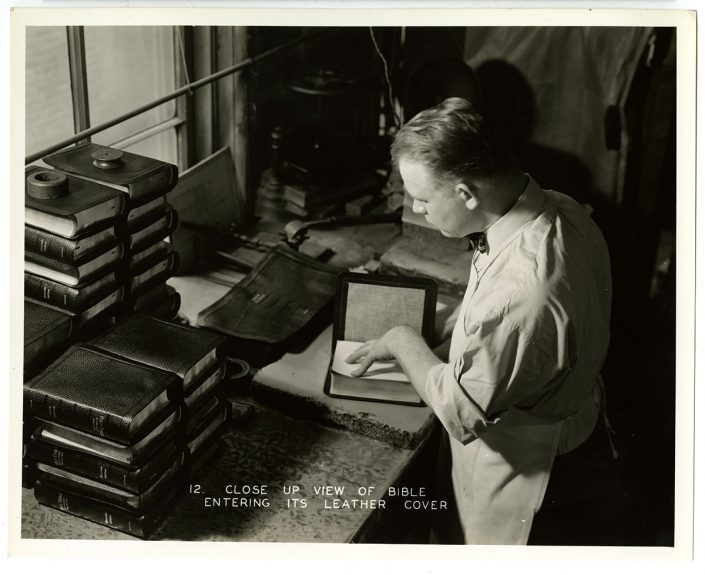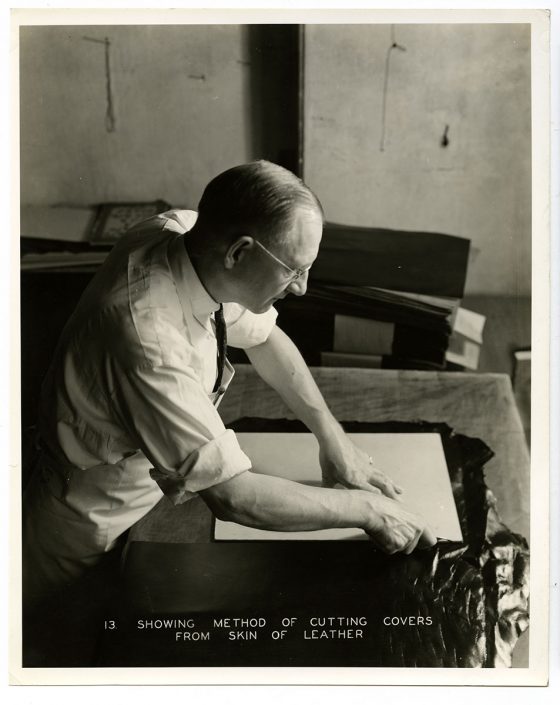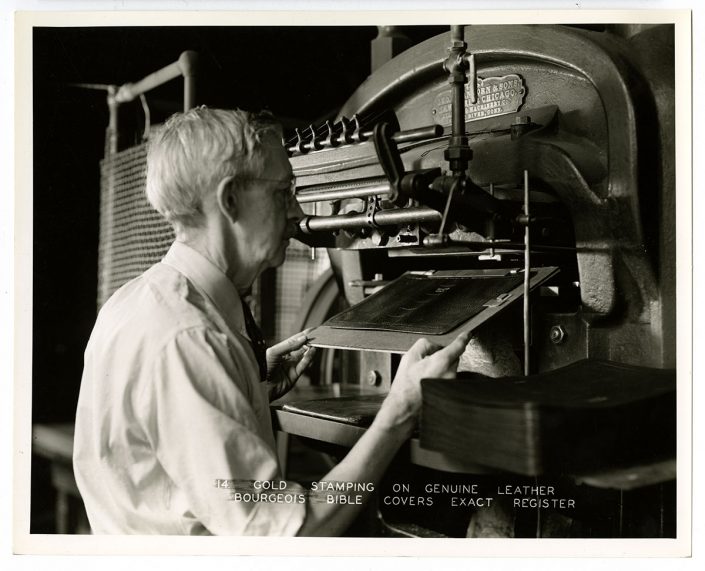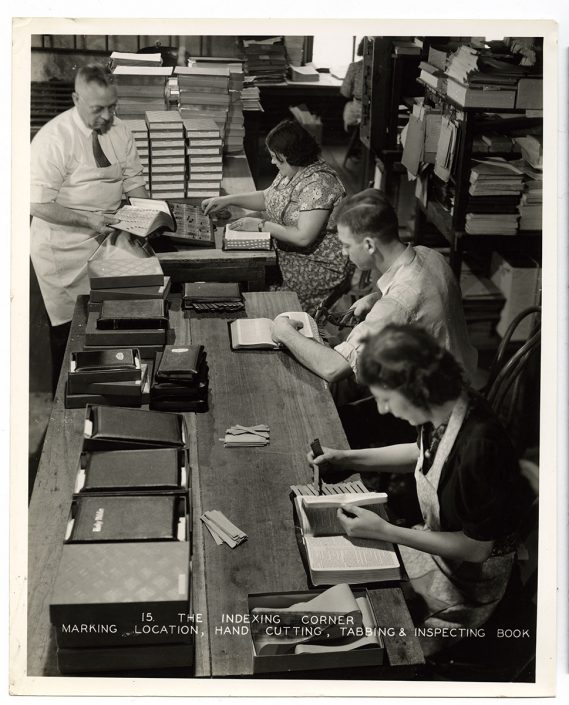Soul Searching
In early America, often the only books in a home were religious. By the late 19th century, as manufacturing and consumerism boomed, the price range and selection of books expanded. Religious books were produced in a variety of styles and materials, from lavish to modest, and for every budget.
The formats of these books reflect their intended roles. Large heavy Bibles were used for family worship at home. Others are small and portable, meant to be carried to church or school or for moments of private devotion.
Pictorial Family Bible (St. Louis, Philadelphia, 1885). Gift of Michael Zinman.
This deluxe Bible has a number of special chromo-lithograph pages for recording important family events such as marriages, births, and deaths, and even a temperance pledge. A series of photo album pages are included in the back.
The Book of Common Prayer (London, 1702), The Holy Bible (London, 1684), The Whole Book of Psalms (London, 1673) bound together. Gift of Carol Rush Hafkenschiel.
According to the bookplate, Mary Sandwith (1732-1815) was given this Bible by her grandfather in 1736, when she was a small child. She likely made the needlepoint woolen cover in the Bargello style, or flame stitch, when she was around eleven years old. The spine has the words “Mary Sandwith her BIBLE 1743” embroidered to look like a book label.
The Holy Bible (London, 1702).
Despite the unusually narrow format of this “Pocket Bible,” each page has two columns of miniscule text.
Ausbund, das ist: Etliche schöne christliche Lieder (Germantown, 1785).
Though this Pennsylvania German liturgical binding is missing its clasps, the rest of the binding is in good condition. These modest bindings rarely fall apart, a testament to the good craftsmanship and the sturdy binding structure used by Pennsylvania German bookbinders.
History of the Bible (Lansingburgh, NY, 1824).
Bible History (New York, 1816).
All: Michael Zinman Collection of Early American Children’s Books.
Known as “Thumb Bibles,” these tiny books are abridged versions of the Bible, generally meant for children. The term “Thumb Bible” was first coined in the mid-19th century and may be a reference to Tom Thumb, a known public figure at the time. These books are also well-thumbed, though that is just coincidental.
See Video on Home Page
Psalms and Hymns (New York, 1810). Michael Zinman Binding Collection.
During a church service, the congregant could conveniently flip back and forth between the Psalms and hymns with this dos-à-dos (back to back) binding.
See Video on Home Page
The Holy Bible (Edinburgh, 1758).
This two volume set of the Bible is hand-stamped with an elaborate pattern that was typical of refined Scottish bindings in the 18th century.
The Holy Bible (Philadelphia, 1844). Michael Zinman Binding Collection.
This elegant Bible was a gift to Mary Ashhurst from the husband of her friend. It was to thank her for “…the kindness shown by you to my wife during her sufferings last summer….” The binding has several lovely features: velvet covers with brass edges, gleaming gold-leaf edges, velvet and pink embossed endpapers, and a clasp with Mrs. Ashhurst’s name engraved on it.
Miss Clara Wrigley in her Salvation Army uniform (Philadelphia, 1898). Albumen photograph.
Frank Berry. Portrait of Frank W. Berry in his Altar Robes (Philadelphia, ca. 1907). Reproduction from a glass negative. Gift of Richard R. Frame.
John Frank Keith. Girl in First Communion Dress (Philadelphia, ca. 1931). Gelatin silver photograph.
Interior views of A.J. Holman and Company (Philadelphia, ca. 1935). Gelatin silver photographs. Gift of Joseph Kelly.
Located 1222-26 Arch Street, A.J. Holman and Company produced large family Bibles and also the smaller, soft-cover version. This series of photographs shows most of the steps involved in manufacturing these Bibles, from printing the pages to “entering its leather cover.”


